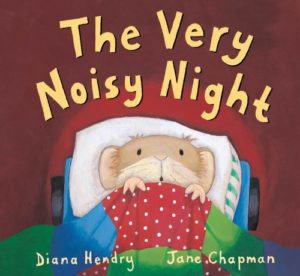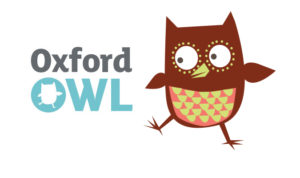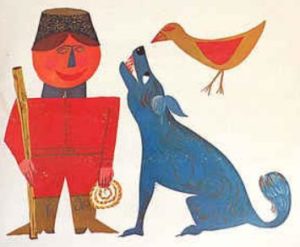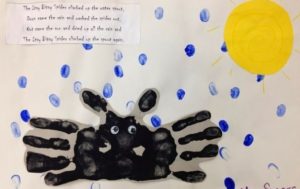Dear all
It has been lovely to see so many of you back in school. For those of you at home we hope you are keeping safe and managing to continue with some home learning. Remember that you can focus on topics and learning that really interest you too. If you go for a walk or to the beach can you do some research, write a poem or draw a picture of what you found there?
Remember that there is no need to complete all of the learning below! The focus should be on maths, some aspects of the online English learning and reading and then maybe you could choose one other project to do from the home learning ideas? Or more if you want to obviously! Make this time at home enjoyable and treasure the time you are together having fun! Remember that you can send us a piece of the children’s work or an activity that they want to share every week on our class email addresses:
Turtleclass@stpeterswaterlooville.hants.sch.uk
Pufferfishclass@stpeterswaterlooville.hants.sch.uk
We would love to see what the children are getting up to at home!
Don’t forget to look at Sumdog for maths, reading and spelling challenges.
English reading and writing
A Very Noisy Night! By Diane Henry You can easily find this on youtube to support your learning!
To listen to a story
https://classroom.thenational.academy/lessons/to-listen-to-a-story
To commit a story to memory
https://classroom.thenational.academy/lessons/to-commit-a-story-to-memory-4ca7c8
To use exclamation marks
https://classroom.thenational.academy/lessons/to-use-exclamation-marks
To begin to write our story
https://classroom.thenational.academy/lessons/to-begin-to-write-our-story-e60c4f
To continue to write our story
https://classroom.thenational.academy/lessons/to-continue-to-write-our-story-f375f0
In this weeks sequence of lessons you will be learning about the story of ‘The Very Noisy Night: by Diane Henry.’ You will be doing some phonics focusing on the sound ow (cow), ou (sound) as well as some spellings linked to the story.
If it is a bit tricky or moves too fast for your child just focus on the key phonics being taught, or one version of the sound that your child knows e.g. ow and the key words. Maybe you could just work on one day of the online learning? Do what you feel your child can cope with. The story map may take some time so perhaps concentrate on verbally retelling the story rather than drawing it out? Then there will be more time to write their own retelling of the story. As a challenge see if the children can add some interesting vocabulary to make their sentences more interesting for the reader?
Reading
We attach the link below because we feel it has some useful ideas. See page three. We are sure that you are doing many of them already!
Menu of reading response ideas KS1
The website below has lots of free to download ebooks suitable for laptops and tablets. You will need to register to access them but it is all free and the website has other information about different areas of literacy which you may find useful.
https://home.oxfordowl.co.uk/books/free-ebooks/
Spelling
Linking to the phonics and story this week:
now, howl, owl, mouse, house, sound, once, push, come (highlighted are the year 1 common exception words)
Maths
To identify the physical properties of coins.
If the coin denominations used prove too tricky for your child, use those coins with which they are familiar to find totals and make equal amounts.
To recognise the value of different coins.
https://classroom.thenational.academy/lessons/to-recognise-the-value-of-different-coins-b1b5b6/
To recognise the value of different coins.
https://classroom.thenational.academy/lessons/to-recognise-the-value-of-different-coins-and-notes/
To compare different amounts of money.
https://classroom.thenational.academy/lessons/to-compare-different-amounts-of-money/
Topic
What do humans need to live in such a cold environment?
Watch this film about some teachers who go to Antarctica and how they kept warm and got around! Can you imagine what it might be like to live somewhere so cold? What clothes would you need? Can you design a set of clothes that you might wear? Include shoes, hat and gloves and warm layers!
https://www.stem.org.uk/elibrary/resource/31005
Music
Week 3- Bird
Listen to this short piece of music and find the picture of the flute.
Is the pitch of this music low or high?
What do you think the bird is doing in the story?
Can you find some everyday objects that make a high pitch?
Religious education
Following the celebration of Pentecost in our Church calendar, we would like you continue to reflect upon our Mission and how we can ‘use the gifts God gave us to make our world a better place’.
Just as the Holy Spirit had appeared to the Apostles of Jesus and gave them hope while they were in Jerusalem, we would like you to consider how YOU can use the power of the Holy Spirit to support and encourage others.
Can you complete ONE of the following activities, to explore how we can continue God’s work on Earth as His followers?
*Write a prayer to Jesus thanking him for sending the Holy Spirit to the disciples.
*Create a Pentecost wind twirl. You could write your prayer on it.
*Retell the story. Perform it to your family.
*Learn this song.
Art
Key Stage One
For your art challenge this week I would like you to do a creation linked to a Nursery Rhyme or book. This could be a collage picture of Humpty Dumpty made out of egg shells, a wanted poster of the Big Bad Wolf, or the witch from one of my favourite books, ‘Room on a Broom.’ You may even do your art in the woods, such as leaving the Gruffalo’s footprints or make a small stick house. It can be a picture using any materials or a 3D creation. Let your fantastic imaginations go wild!
WOW! CHALLENGE: Learn the Nursery Rhyme or a page from the book and perform it to your family.
Ideas to inspire you:
However, if this doesn’t appeal to you, then you can still send any other art work to me and I will post that on the Blog too.
Please email your artwork to me:
n.pearson@stpeterswaterlooville.hants.sch.uk
Thank you
Keep creating and keep safe!
Mrs Pearson
Family Science Activity
**Please note that this activity must be carried out in the presence of an adult to ensure safety**
Safety advice for parents
- Do the activity on a table which is cleared of any other flammable objects or materials. Use your judgement as a parent to decide whether or not to let your child light the candles on their own.
- Make sure you’ve blown out any candles after doing the activity. Don’t move a lit candle when doing this activity. Don’t allow your child to touch the wick or candle until it has completely cooled.
- Don’t leave a lit candle unattended at any time. There’s more extensive safety advice on using candles from the UK Fire Service here: http://bit.ly/BeFireSafe
The activity
- Make a blown out candle relight as if by magic.
- ExpeRiment to find out how long a candle will burn in different amounts of air.
- Learn about the chemistry of how a candle burns.
https://www.rigb.org/families/experimental/candle-chemistry
What you will need
- At least one tea light or other small candle.
- Gas-powered cooker lighter (or long handled matches).
- Glass jars or glasses of various sizes.
- Stopwatch (maybe the one on your smartphone) or other way of measuring time.
What to do
https://www.rigb.org/docs/candlechemistry_infosheet_0_1.pdf – for information sheet about the activity.
Going Further Challenge:
Learn more facts about fire: http://bit.ly/FireFacts
Make a carbon dioxide fire extinguisher for your candles: http://bit.ly/CO2Ext
Watch a video on how candles are made: http://bit.ly/CandlesMade
Use a candle to suck water into a glass like Josh does at the end of the film: http://bit.ly/WaterCandle













